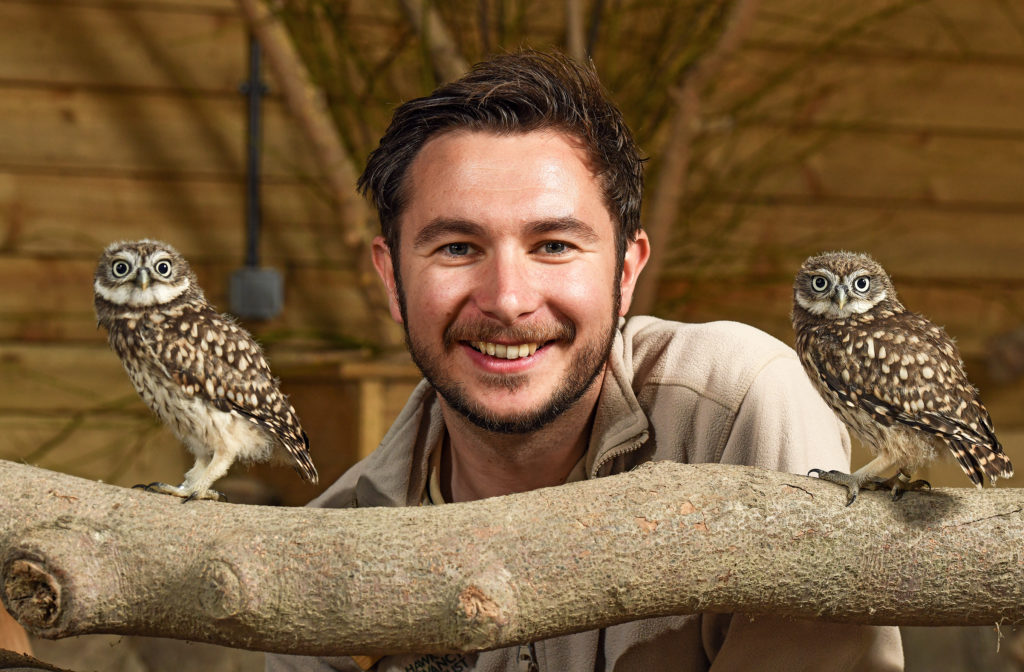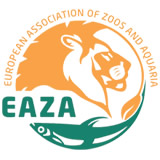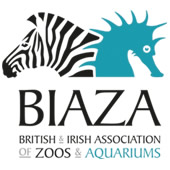What a wild night we had on 29 June. After months of planning, days (and nights!) of pre-show preparation by dozens of staff and volunteers and a lot of wishing for good weather, Chris and Megan’s Night of Nature finally arrived. The sun shone over the Hawk Conservancy Trust – Reg’s Wildflower Meadow was alive with a certain hum, a buzz of energy – and not just from the bees!
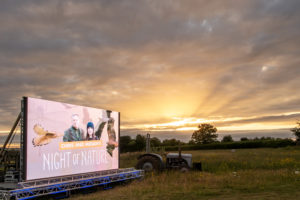
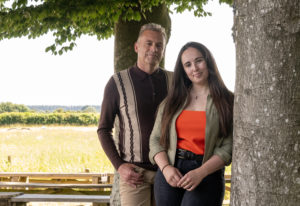
Visitors enjoyed the evening sun, some wandering the grounds with an ice cream, others partaking of our freshly prepared barbeque food and glasses of prosecco. We were also joined on the evening by Alex McGarry, Trust Artist in Residence. Guests could admire some of her previous work, and also watch as she created a new piece as the evening unfolded. This painting, immortalising the special event, was the top prize for the evening’s fundraising raffle, alongside a bottle of limited edition Poet Laureate sherry, donated by Simon Armitage.
To begin the main feature of the evening, as everyone settled in their seats, we were joined by Emily Hunt, the Young Poet Laureate for Warwickshire, as she gave a reading of her new poem – Sunset Flight. This poem had been written especially by Emily for the Trust and, specifically, this event. Emily’s words captured the spirit of the evening and the work we do at the Trust. Each bird making an appearance in the meadow that evening was given a moment – a teaser for what was to come. The final stanza was enough to make the hairs on the back of your neck stand on end:
‘Our hearts full of feathers, beaks and wings
This magic which brings us together
For those who wheel, swoop and sing.”
The evening was hosted by our own Tom Morath (Deputy Head of Living Collection and host of our podcast, Nature’s a Hoot) and, against the backdrop of Reg’s Wildflower Meadow, Tom welcomed everyone to the evening and introduced the headline acts – presenter, writer and cherished friend of the Trust Megan McCubbin, and tireless advocate for nature: Trust President Chris Packham. Each of them recounted fond memories from visiting the Trust. Megan’s first trips here were when she was still in primary school – trips that later inspired owl pellet dissection birthday parties! Chris recounted his first visit and a chance meeting with Trust founder, Reg Smith, as he allowed Chris to get a little closer to the Peregrine Falcon he was attempting to photograph. Chris said “Reg saw past my bleached, blonde quiff and studded leather jacket and saw a shared passion for birds of prey and welcomed me in when not many others would have done.”
Tom, Chris and Megan were also joined in the meadow by Dr Zoe Randle from Butterfly Conservation as we took a closer look at some of Reg’s Wildflower Meadow’s smaller residents – the beautiful butterflies and moths. It’s sometimes tricky to demonstrate how these tiny insects to such a large audience – so we hatched a plan! Upon arrival into Reg’s Wildflower Meadow, guests were met with a large, 5m x 3m screen (expertly installed by Viv and Q from our volunteer team and who have a mind for the technical). With a camera close by, we could show the whole audience something tiny, enlarged on the screen.
Zoe brought some moths along – including the elegant White Satin Moth, Elephant Hawk Moth and Poplar Hawk Moth. Butterfly Conservation also presented us with an enormous puppet version of a Marsh Fritillary Butterfly– a beautiful representation of this native species. Zoe also demonstrated the defence mechanism of the Puss Moth caterpillar, bringing along a puppet version. Megan was asked to don a Blue Tit mask (the bird being a regular predator of the caterpillar) and was subsequently squirted by the puppet with its ‘formic acid’ (water from the in-built water pistol!).
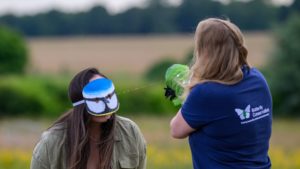
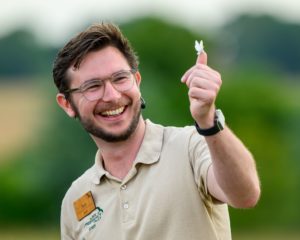
Next we were onto the real stars of any of our shows here at the Trust – the birds. We introduced Scout, our Eurasian Kestrel, and demonstrated her hovering behaviour as Chris recounted his personal experiences and connection with the species. We delved into the world of small mammals and the role they play in the food chain, ultimately becoming lunch for larger predators like birds of prey. Charlie, our beautiful Barn Owl, quartered over the meadow, ever-so-delicately melting the hearts of all who watched – this natural behaviour captured in the fading summer light.
As beautiful as he is, Charlie is also adept at demonstrating his natural hunting behaviour and at this point, Tom set Megan the challenge to become a Barn Owl’s lunch. With an AstroTurf pad, fitted with a beeper that Charlie is trained to locate, Megan hid herself in the meadow. As Charlie got closer, following the beeper, Megan was allowed a prey’s-eye-view of a Barn Owl. And so were we as Megan video-called Tom who sent the images to the screen. Charlie pounced down, ‘caught’ Megan and continued with his flight. Definitely a highlight of the evening as Charlie concluded the first half.
The second half of the evening began as two lucky guests were selected to ask Chris and Megan their questions – “When does a cuckoo know it’s a cuckoo?” and “What’s the most interesting animal you have ever seen?” – if you wanted the answers, you had to be there!
Kiara, our Steller’s Sea Eagle, was up next. As the newest member of the flying team at the Trust, we were uncertain about how she might react to the biggest audience she’s yet to see here. As she took off, just behind the audience, we got one wonderful glimpse of her enormous wings, before she took up residence in a tree near the bottom of the park for the rest of the evening where she watched the proceedings unfold! Maybe next time…
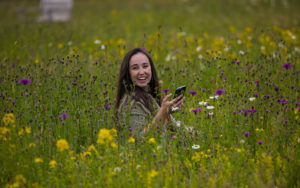
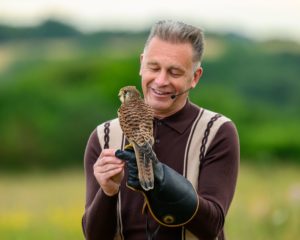
Next, Fagin, our Hooded Vulture took centre stage, and he flew to both Chris and Megan right over the heads of the entire audience. Fagin is known for cutting it fine as he skims overhead so this is always an exciting experience. All the while though, the important message of vulture conservation was the focus. A large part of why fundraising events like this one are needed at the Trust is to support the work we do with Critically Endangered vulture species like the Hooded Vulture. They’re expert scavengers and so to demonstrate, Chris invited Megan to try something he’d had the chance to do before at the Trust – become dinner for the vultures. Suiting up with our ‘bait suit’ (a jacket covered in tasty vulture food) and a pair of goggles for safety, Megan gave a Shakespearean ‘death scene’ in the meadow before Fagin and his friends flew over to make the most of the opportunity!
For one final time, our amazing birds took to the wing for an epic finale. Our Hooded Vultures were joined by our entire team of Black Kites – wheeling and swooping around the meadow as only they can – set against the backdrop of the last fading light of this beautiful summer evening.
A huge thank you to everyone involved in this event and a special thanks to Chris Packham and Megan McCubbin for their support of the Trust’s work. It allows us to raise vital funds for our conservation and research work to help us to achieve our mission – the conservation of birds of prey and their habitats. Now it’s time to start planning the next one. Watch this space…
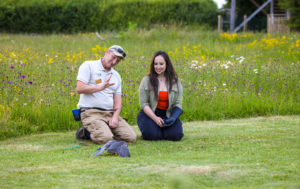
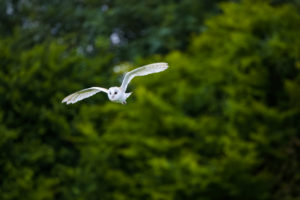

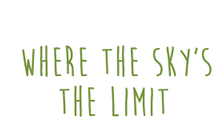




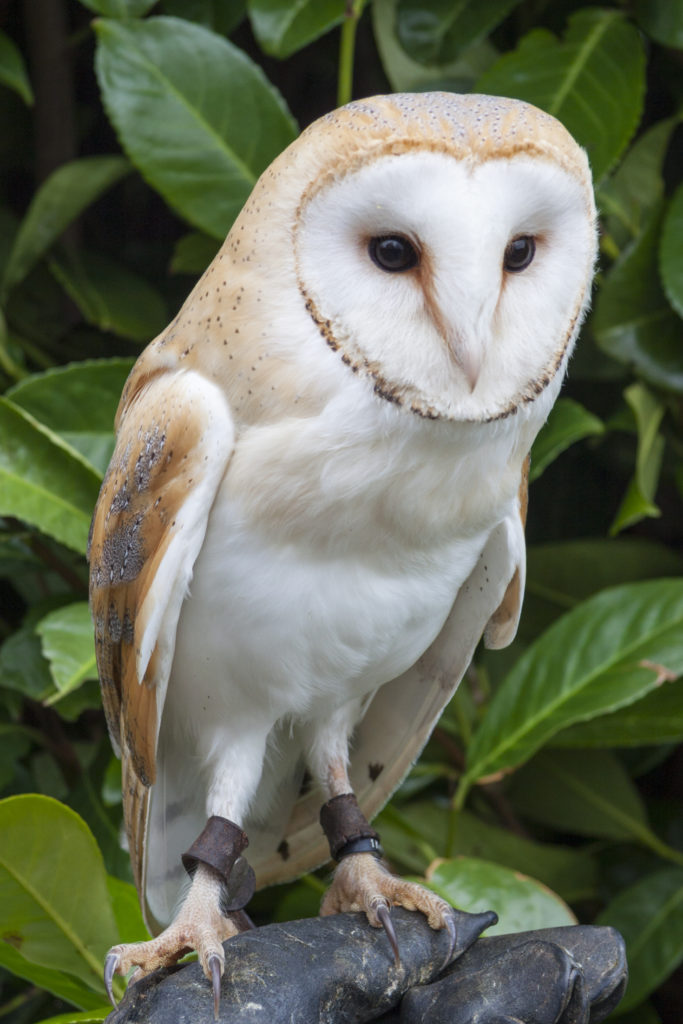
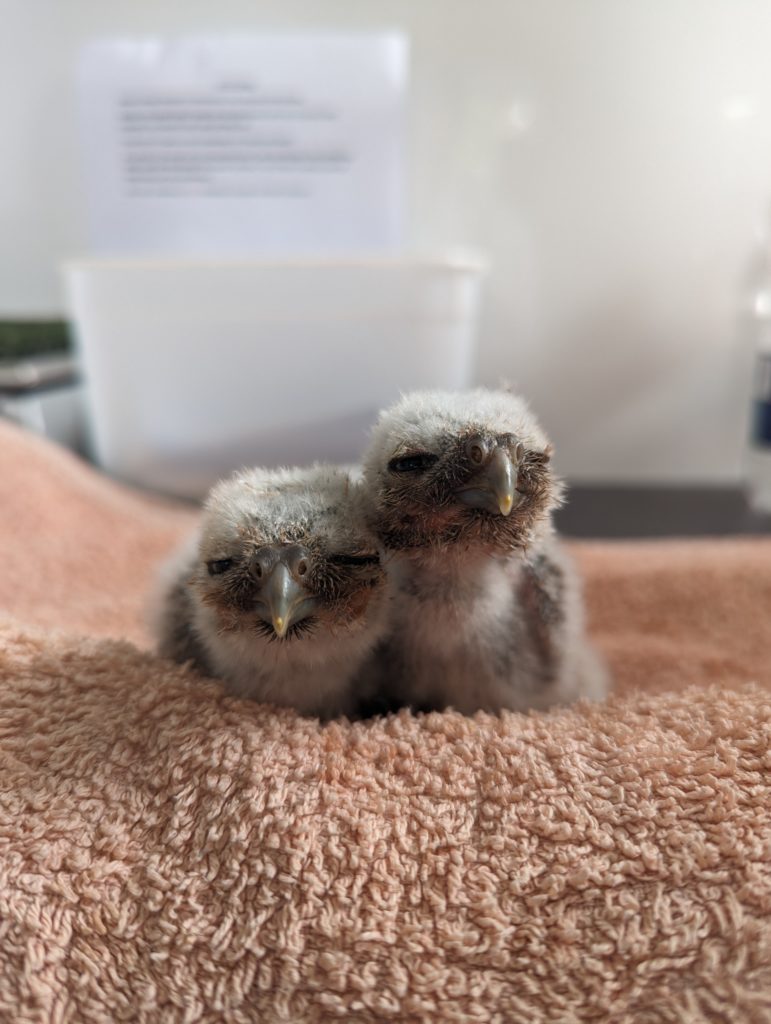
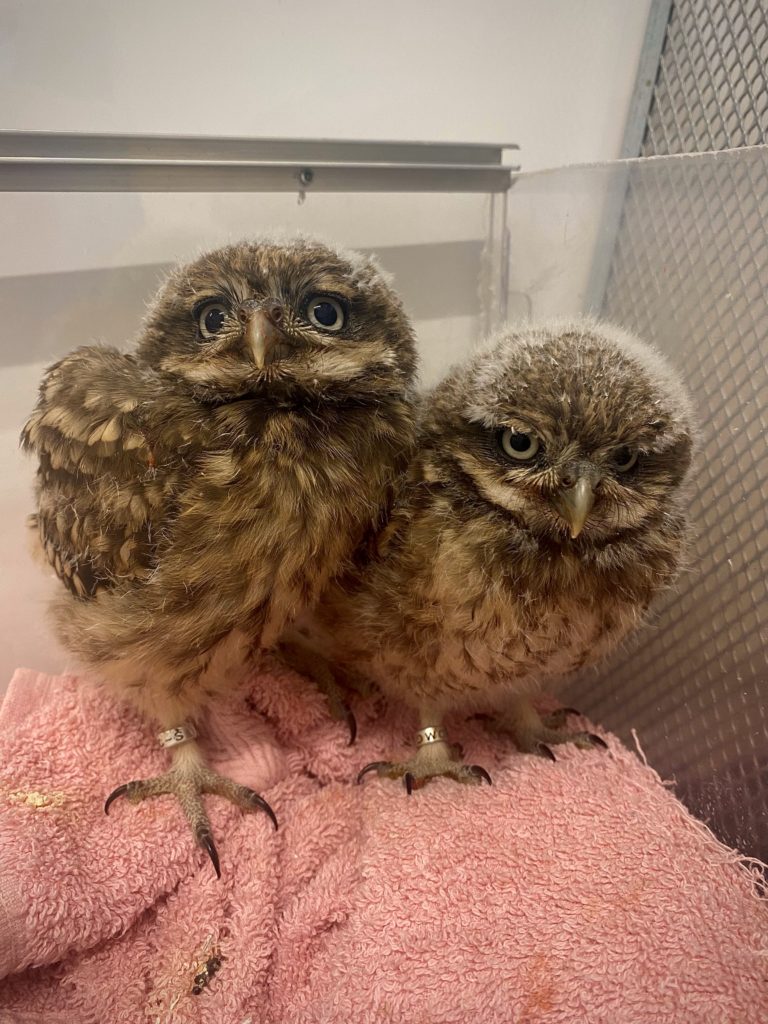 “It’s always an exciting time when we welcome new birds to the Hawk Conservancy Trust and this is especially true when those birds are still just chicks. Over the last few weeks, I’ve had the great privilege of watching two Little Owl owlets change from tiny bundles of white down into fully grown youngsters.
“It’s always an exciting time when we welcome new birds to the Hawk Conservancy Trust and this is especially true when those birds are still just chicks. Over the last few weeks, I’ve had the great privilege of watching two Little Owl owlets change from tiny bundles of white down into fully grown youngsters.